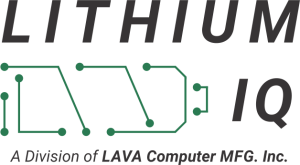
Zinc–Iodine battery innovation supports battery protection and may extend battery lifespan
By: Leonid Shalashnyi
2 Min Read
July 25, 2025
University of Adelaide researchers develop a stable zinc–iodine system that could reshape grid-storage solutions.
Dry Electrode Design and Gel Film Improve Stability
Researchers at the University of Adelaide, led by Prof. Shizhang Qiao and Han Wu, have demonstrated a new zinc–iodine battery design using a “dry electrode” process and a protective gel film. By mixing active materials as dry powders and rolling them into thick, self-supporting cathodes — instead of the traditional wet iodine mixing method — the team achieved a record electrode loading of 100 mg/cm².
Additionally, they added a small amount of 1,3,5-trioxane to the aqueous electrolyte. During charging, this forms a flexible protective film on the zinc anode. The film suppresses sharp zinc dendrite growth — a common cause of short-circuits in aqueous batteries.
Performance data is notable: pouch cells retained 88.6 % capacity after 750 cycles, while coin cells showed 99.8 % retention after 500 cycles. The protective film and high iodine loading reduce self-discharge and shuttle loss, making the battery more efficient and durable.These advances bring zinc–iodine batteries closer to practical use in grid-scale or utility storage — offering battery protection, cost savings, and safety advantages over lithium-ion. The team plans to scale the technology via reel-to-reel production and aims to double energy density to ~90 Wh/kg by optimizing current collectors and electrolyte use.
How the Protective Film Tackles Battery Failure
This development is significant because it directly tackles two core challenges of aqueous zinc batteries: dendrite-induced short circuits and low electrode loading. By implementing a dry-cathode assembly and a polymerizable film-forming additive, the team has validated a method that significantly enhances battery protection — the protective film mitigates dendrite formation, a major cause of failure in metal-anode systems.
The cycling results — up to 750 stable cycles while retaining over 88 % capacity — indicate impressive longevity that may well extend battery lifespan in practical applications. This performance challenges the notion that aqueous chemistries are inherently limited in cycle life compared to those of lithium-ion batteries.
While these batteries are currently geared towards grid and utility storage, the technological principles — dry electrode processing, interface stabilization — could influence future mobile battery designs. However, there is no information yet on adaptation to smartphones or laptops.
Overall, the team’s peer-reviewed publication (in Joule) reinforce reliability, yet widespread adoption will require more data on scalability, cost, and integration. The mention of reel-to-reel manufacturing and future tests with other halogen chemistries shows deliberate planning toward real-world impact.
Toward Scalable, Long-Lasting Grid Storage
This zinc–iodine battery breakthrough offers proven battery protection, high cycle durability, and the potential to extend battery lifespan in large-scale applications. Further development and data are needed to assess its future role beyond grid storage.
